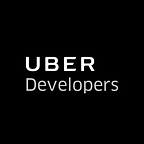Button gives developers a way to offer Uber rides with just a few lines of code
Increase your users’ time spent in your mobile experience by 10% or more using the Uber Button
People are increasingly using the mobile phone as the remote control for their life: they use them to find, request, book, and purchase almost anything they need in the world around them. Unfortunately, mobile apps are still mostly siloed, making it difficult for that remote control to easily handle every consumer need. If they find a restaurant for dinner on one app, they have to go to another to make a reservation, and yet another to get a ride there — each of these switches leads to drop off and frustration.
Button is determined to solve this problem. Working with leading companies such as Uber, Jet, Groupon, and Ticketmaster, Button offers powerful “contextual commerce technology,” which predicts what consumers want and surfaces relevant buttons that drive real-world actions. Take the previous dinner scenario: Button makes it easy to find a restaurant in Foursquare, make an OpenTable reservation, and request an Uber ride all within the Foursquare app experience.
Button first integrated with Uber in late 2014. Since then, they have supported dozens of customer integrations with Uber and connecting their users to rides from their mobile apps and sites. Today, Uber buttons are live in 81 countries and in more than 30 languages worldwide.
The integration has proved exceedingly beneficial for Uber, Button’s customers, and users. From Foursquare transporting hungry diners to well-reviewed restaurants, to the ticketing app Goldstar getting people to exciting events on time, to Hotels.com delivering guests to their night’s lodging, many partners are receiving immense value from suggesting an Uber ride — right when their users want it.
Button and Uber worked closely to iterate on the Uber Button. Starting with a few lines of code to integrate Uber into an app, the team added a number of helpful features, including real-time previews of Uber vehicles through Button’s Commerce Cards (i.e. an UberX is five minutes away, estimated fare is $10) and dynamic calls-to-action (“Ride there in three minutes”).
“Button’s mission has always been to connect people to their next intended action across mobile, where intent manifests across a variety of mobile experiences. We’ve driven tens of thousands of rides, brought Uber requests to leading brands like Condé Nast, Hotels.com and Foursquare, and helped mobile app developers earn money and increase the time spent in their apps — all through a simple drop-in SDK. It’s been a successful partnership on both sides, and we’re eager to continue embedding Uber buttons across the mobile ecosystem.”
— Michael Jaconi, Co-Founder & CEO, Button
Connecting people with rides when they need them most
Button uses Commerce Cards to present app actions and inventory matched with context from the developer’s app or mobile site. Thanks to Uber’s API, the Uber button provides end users with the best experience by not only offering them convenient transportation, but also giving them real-time information about which ride options are available, how long it will take for a ride to arrive, estimated fare, and more — all while still in the developer’s app and before being deep linked to Uber.
“Working with Button, we realized we could drop in a SDK that seamlessly serves up a beautiful user experience for any app developer looking to add an Uber button into their app or their mobile website. We put the SDK to the test, with the goal of integrating Uber into our Android app during the short span of a hackathon, earlier this year. Within just a couple of hours, we had a fully functioning Uber Button up and running. Our developers were so impressed with the ease of integration and the utility added to our user experience that we decided to make this hack a reality.”
— By Jane Roslyak, Senior Product Manager for Mobile, Hotels.com
Offering rides at the right time leads to greater user engagement
In addition to providing a revenue source for publishers, Button found that adding an Uber button also increased the frequency and level of engagement within their customers’ apps. After analyzing user behavior across their portfolio of partners, Button reported that apps that hosted an Uber Button saw an 11% increase in time spent in their app after a user engaged with an Uber Button.
Even better, people kept returning to apps with Uber Buttons. Button discovered that the average number of visits to the page with the Uber Button on it increased up to 26% after a user engaged with the Uber Button. Furthermore, 21% of those users came back within 48 hours and used the feature to navigate to Uber again.
This data suggests that adding an Uber Button is one of the easiest and least engineering intensive ways to increase your users’ time spent by 10% or more for your mobile experience.
Now serving mobile web, too!
Most recently, the team also brought Uber buttons to the mobile web, expanding the ability to request an Uber wherever a user is on mobile. Conde Nast Traveler and Goldstar both added Uber buttons to their mobile sites, enabling users that browse their respective mobile sites to hail an Uber after reading an article about a travel destination, or after booking event tickets.
All in all, integrating Button’s SDK takes less than an hour, and the mobile web JavaScript takes under 10 minutes. By instantly connecting your mobile app or site, in context to Uber, Button saves you time and energy so you can focus on building the best mobile app or site.
⚀ To get updates from the Uber Developer team in the future, follow our publication or follow us on Twitter.
⚀ Please tap or click “♥︎” to help to promote this story to others.
